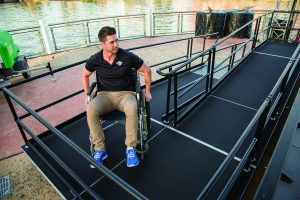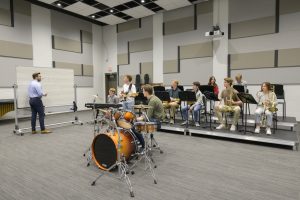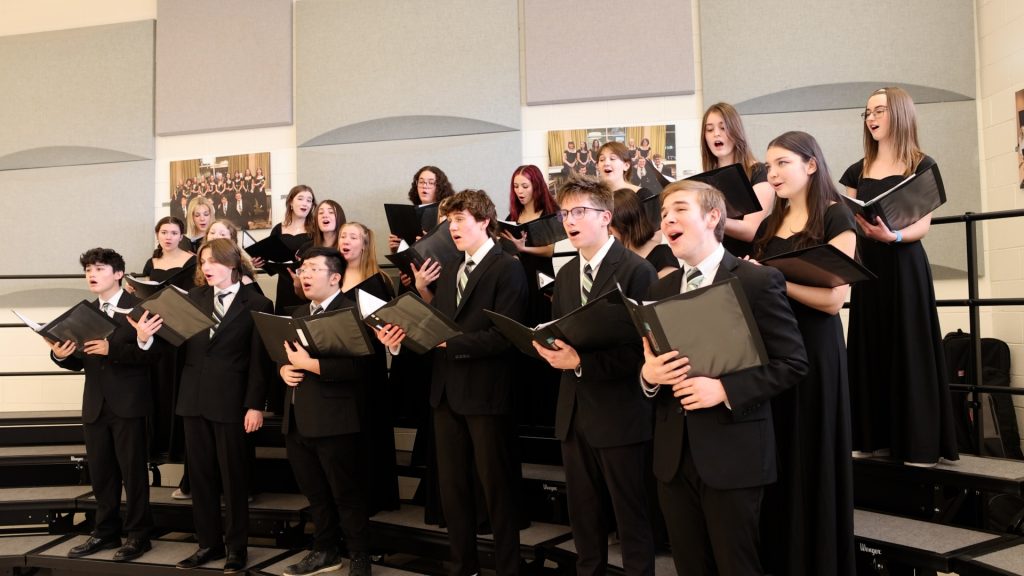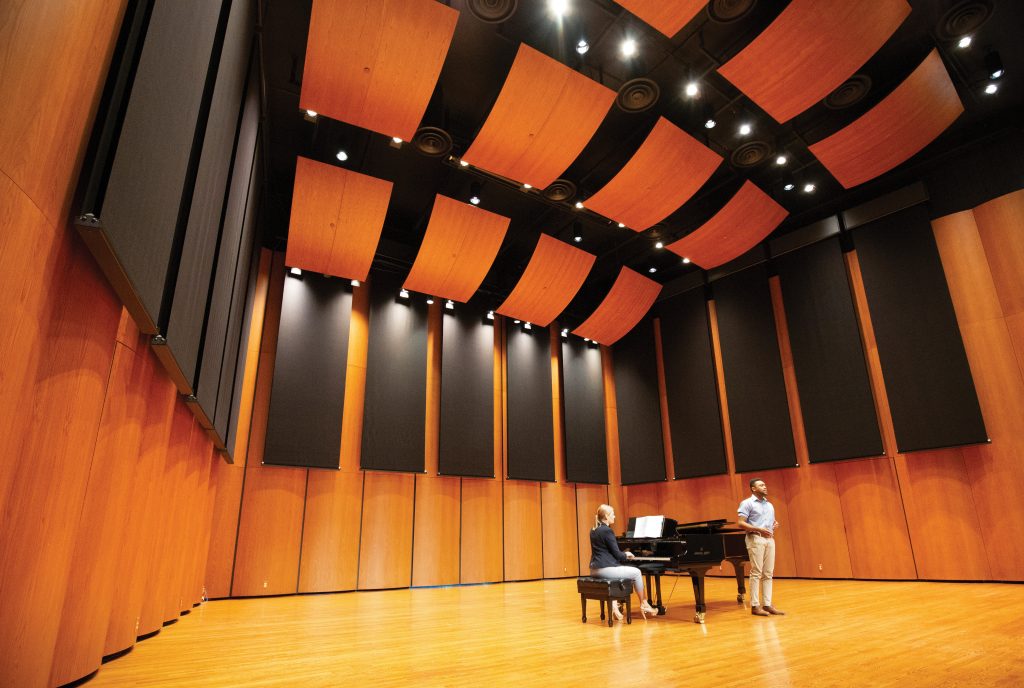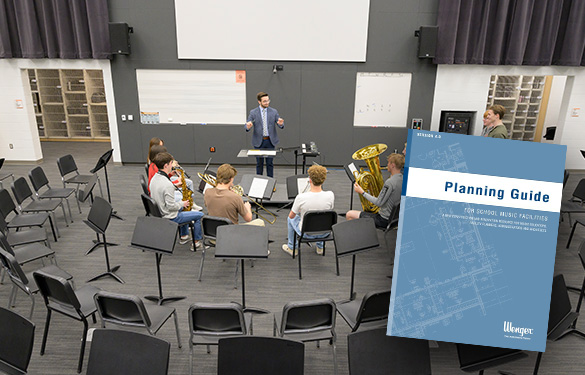
In creating this guide, we consulted Karen Lesser, an industry expert with over 40 years of experience in producing musical theatre and show choir performances at outdoor venues. With a portfolio that spans directing, teaching, and touring with ensembles across the U.S. and abroad, Karen brings a wealth of knowledge to the topic of outdoor performances. In this guide, Karen shares her invaluable expertise, offering tested tips and essential checklists that ensure your outdoor performance is poised for success.
We have organized this information into a timeline that will help you carefully consider each performance situation and plan for every potential pitfall.
For a more in-depth planning guide, you can download our Outdoor Performance Checklists by submitting the form at the bottom of the page.

Planning Framework: Who, Where, What, When, and How
WHO
An obvious first step in the planning process is to consider who will be performing, and assess what needs you performers and audience will have. Having clear numbers for these groups is a good start.
- How many performers will attend?
- How many audience members are expected?
- How many volunteers or “stagehands” will you need?
Getting an accurate count of these groups is critical before moving ahead in the planning process.
(See checklist 1 of the download at the bottom of the page for more details on WHO)
WHERE
Finding the best location for your performance will be one of the first opportunities to set your ensemble up for success. Be sure to thoroughly consider environmental factors when choosing where you’ll perform. Uneven terrain under the stage can pose a problem, unless you have a staging system with adjustable legs such as Wenger’s StageTek Outdoor. Other potential challenges could include the following.
- Is there shelter available for performers and/or audience?
- Can the area accommodate a tent if you choose to set one up?
- Is there noise from nearby playgrounds or sports areas?
- Can you move to a nearby indoor location quickly in inclement weather?
- Does the location have easy access for load in and load out?
- What backstage or offstage areas will be required for the performance?
- Are there sufficient power sources at the location?
- What is the cost and permit process for the location?
Asking questions and keeping a detailed record of venue specifics can head off major problems during later steps in the planning process.
(See checklist 2 of the download at the bottom of the page for more details on WHERE)

WHAT
Aside from a detailed program, the “type” of performance you’re producing will require you to consider factors such as staging, offstage storage areas, changing areas, etc. Here are a few questions to ask.
- How big does your stage need to be? (Karen recommends a 16’x20’ deck for 8-10 musicians, with dance requiring much more space)
- How will the acoustics of the space work with the performance?
- Will you need amplification and what equipment does that involve?
- Is lighting necessary and what solutions are available?
- Does the staging setup need to change during the course of the show?
- Will configuring the stage into multiple levels improve the audience experience?
If your show will include a variety of performance types, always tailor your stage setup to the one that requires the most space, and make sure to account for any set changes during transitions between acts.
(See checklist 3 of the download at the bottom of the page for more details on WHAT)
WHEN
Some of your biggest variables when planning an outdoor concert come from the unpredictability of the weather. Considering those challenges when deciding the time of your performance can alleviate some of that stress. A visit to your venue on the same day of the week and at the same time of day you’d like to perform (provided it’s not more than 8 weeks away) will allow you to assess the location for factors such as the following:
- Consider the direction of the sunlight. It’s best if neither performers nor audience are facing directly into the sun.
- Check to see if there are other weekly or monthly activities that take place at the same day and time that may present a sound or access issue.
- Confirm that indoor backup locations and nearby restrooms are unlocked during the duration of your show.
- Stay at the venue for the same amount of time your show will be taking place and watch for other potential problems.
Once you have the data from your site visit, it will be easier to decide on a suitable time for the performance.
(See checklist 4 of the download at the bottom of the page for more details on WHEN)
HOW
Now that you’ve laid the groundwork for a successful outdoor performance, it’s time to get into the nitty gritty of detailed planning. It is a good idea to build your own checklists (start with ours as a reference) for the day of your show, especially if you are relying on volunteers or others who might not know all the ins and outs of the setup and program. A few initial items to consider are listed below:
- Transportation – how will performers, props, sound, lights, etc. get to the venue?
- Mobility – how will staging and equipment get from the parking lot to the performance location?
- Timing – what are the call times for different groups such as stage crew, performers, and audience?
- Tech – is there time to have a full sound check and/or dress rehearsal?
An investment in high quality equipment, such as the GearBoss® TranSport cart, can save you time and effort when trying to get props and gear to the performance location. The flexibility to use the cart as a durable table once you get to the staging area is an indispensable feature for any outdoor performance.

Adding a moving cart specifically designed for your staging system is another way to minimize the headache of getting staging from the truck to the performance location. Carts can be rolled onto a truck fully loaded and secured with ratchet straps for transport.
(See checklist 5 of the download at the bottom of the page for more details on the HOW)

A NOTE ON WEATHER
According to Karen, wind is the biggest issue when it comes to bad weather. Unamplified voices and even some instruments will have a hard time being heard over wind. For amplified performances, wind noise from the microphones can also make performing difficult. Wind wreaks havoc with sheet music on stands, costumes, props, and set pieces. Having sandbags or stand weights for larger equipment such as elevated speakers is crucial for safety, even if you’re not expecting wind. In an ideal situation, your venue would have a structure that offers shelter on at least three sides, as well as overhead. Obviously, rain is another big issue, but Karen stated that it’s easier to prepare for rain with tarps and tents, and as long as it’s not a downpour, most audiences will stick it out through a light shower.
Karen noted that there are a lot of advantages to an outdoor performance if it’s well planned. It gives you more space to spread out, outdoor venues are generally inexpensive or free to use, and it’s fun for the performers and audience to experience the show outdoors. After 40 years and hundreds of shows (and a few horror stories) Karen has many happy memories of fantastic experiences with her students, and their audiences.
To download the Outdoor Performance Checklists submit the form below and the download will start automatically. If you don’t see a pop-up, check your downloads and see if it is there.

